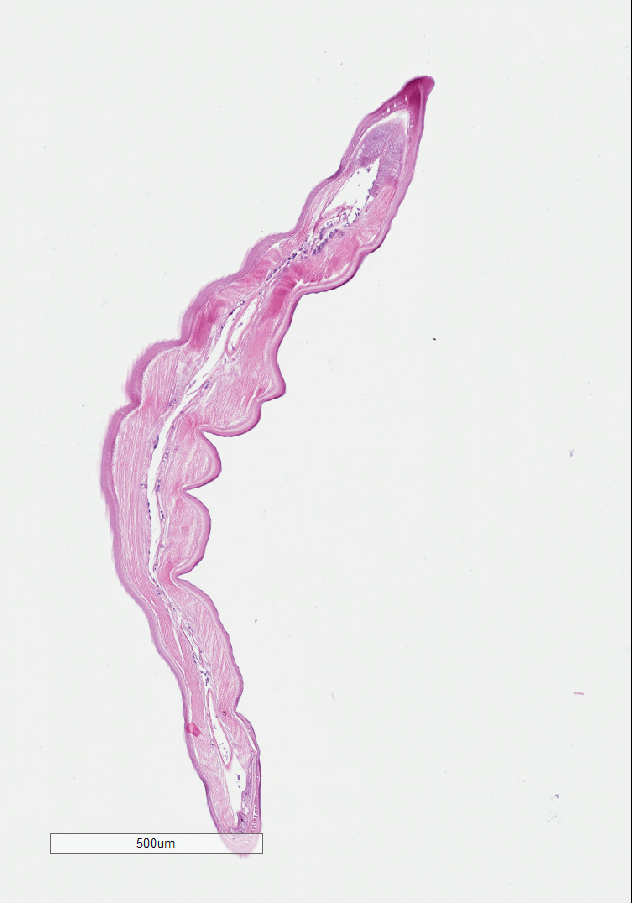Sarcoptes scabiei var. hominis mite (by light microscopy)
Scabies and therapeutic resistance
Scabies is an infectious disease, caused by infestation of the skin with ectoparasitic mites (Sarcoptes scabiei var. hominis), and affects an estimated 200 million people worldwide. In the past years increasing incidences have been reported, complicated by accumulating reports of treatment failure towards conventional scabicides. Hence, this adds to the challenge of controlling scabies. We have recently identified a mutation in the voltage-sensitive sodium channels (Vssc) of scabies mites in Austria, which is associated with “knockdown”-resistance against insecticides. Currently, we continue our investigations on potential mechanisms for resistance in scabies mites from different countries worldwide.

Mouse papillomavirus-induced skin cancer on the back of a mouse
Papillomavirus-induced skin carcinogenesis
Persistent infection with oncogenic human papillomaviruses can lead to the development of anogenital malignancies, particularly cervical cancer, and a subset of head and neck cancer. In addition, certain cutaneous types are implicated in the development of skin cancer in genetically predisposed and, possibly, immunocompromised individuals. We have recently demonstrated that the murine papillomavirus MmuPV1 is capable of causing skin cancer in immunosuppressed mice. Employing this mouse model, we aim at elucidating the mechanisms how papillomavirus infection contributes to skin carcinogenesis.

Human Mpox lesions
Virus infections and public health
The world is increasingly faced with emerging virus infections. We engage in contributing to public health measures, which aim at preventing and controlling dissemination of certain viral diseases, such as Mpox or SARS-CoV-2, by providing some knowledge on infection control practices, including vaccine-induced protection and surveillance strategies.

Dirofilaria repens
The epidemiology of parasitic infections
Due to multifactorial causes, predominantly imminent climate changes, a recrudescence in the number of parasitic infections can be anticipated in previously non-endemic regions. We have previously reported increasing incidences of certain vector-borne parasitoses in Austria, among these leishmaniasis, which is caused by intracellular protozoan parasites of the genus Leishmania, and dirofilariosis, which is caused by infection with filarial nematodes (roundworms). We will pursue the investigations on the changing pattern of parasitic diseases.
